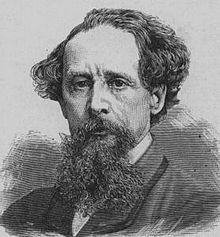اموزش زبان انگلیسی
اصطلاحات نکات ازمون اموزش کتاب ایبوک زبان انگلیسیاموزش زبان انگلیسی
اصطلاحات نکات ازمون اموزش کتاب ایبوک زبان انگلیسیاشنایی با ادبیات انگلیسی
گ Hi there friend
English literature is full of literati and poem composer whose some of novels and poems have diffrents fans from diffrent placed around the globe.
Here I am going to introduce some of those popular people in english literature .
Katharine Brush (August 15, 1902 - June 10, 1952) was a United States author. Her short story Birthday Party appeared on the 2005 Advanced Placement English Literature Exam; the story was originally published in The New Yorker's Fiction section in 1946. Brush's Connecticut home was featured on an episode of HGTV's "If Walls could Talk".
According to her autobiographical collection of works, This Is On Me (1940) OCLC 26043754, Katharine Brush was born Katharine Ingham in Middletown, Connecticut. Ms. Brush did not attend college, but instead began working as a columnist for the Boston Traveler. During her career she published multiple short stories in serial magazines like College Humor and Cosmopolitan; the best known of these were collected in a book titled Night Club (1929). Brush's works are characterized by her involving narrative style and wit.
Her works include:
Glitter,
Young Man of Manhattan (1930)
Mannequin,
Red Headed Woman, (1931), which was made into a movie starring Jean Harlow
This Man and This Woman, and
This Is On Me (1940)
From Wikipedia
Charles John Huffam Dickens, FRSA (IPA: /ˈtʃɑːlz ˈdɪkɪnz/; 7 February 1812 – 9 June 1870), pen-name "Boz", was the most popular English novelist of the Victorian era. He was a vigorous social campaigner, both in his own personal endeavours as well as through the recurrent themes of his literary enterprise.
Critics George Gissing and G. K. Chesterton championed Dickens's mastery of prose, his endless invention of unique, clever personalities, and his powerful social sensibilities, but fellow writers such as George Henry Lewes, Henry James, and Virginia Woolf faulted his work for sentimentality, implausible occurrences, and grotesque characterizations.[1]
The popularity of Dickens's novels and short stories has meant that they have never gone out of print.[2][3] Many of Dickens's novels first appeared in periodicals and magazines in serialised form—a popular format for fiction at the time—and, unlike many other authors who completed entire novels before serial production commenced, Dickens often composed his works in parts, in the order in which they were meant to appear. Such a practice lent his stories a particular rhythm, punctuated by one minor "cliffhanger" after another, to keep the public looking forward to the next installment

From Wikipedia
Mary Anne (Mary Ann, Marian) Evans (22 November 1819 – 22 December 1880), better known by her pen name George Eliot, was an English novelist. She was one of the leading writers of the Victorian era. Her novels, largely set in provincial England, are well known for their realism and psychological insight.
She used a male pen name, she said, to ensure that her works were taken seriously. Female authors published freely under their own names, but Eliot wanted to ensure that she was not seen as merely a writer of romances. An additional factor may have been a desire to shield her private life from public scrutiny and to prevent scandals attending her relationship with the married George Henry Lewes

From Wikipedia
Jane Austen (16 December 1775 – 18 July 1817) was an English novelist whose realism, biting social commentary and masterful use of free indirect speech, burlesque, and irony have earned her a place as one of the most widely read and most beloved writers in English literature.[1]
Austen lived her entire life as part of a small and close-knit family located on the lower fringes of English gentry.[2] She was educated primarily by her father and older brothers as well as through her own reading. The steadfast support of her family was critical to Austen's development as a professional writer.[3] Austen's artistic apprenticeship lasted from her teenage years until she was about thirty-five years old. During this period, she experimented with various literary forms, including the epistolary novel which she tried and then abandoned, and wrote and extensively revised three major novels and began a fourth.[B] From 1811 until 1816, with the release of Sense and Sensibility (1811), Pride and Prejudice (1813), Mansfield Park (1814) and Emma (1816), she achieved success as a published writer. She wrote two additional novels, Northanger Abbey and Persuasion, both published posthumously in 1818, and began a third, which was eventually titled Sanditon, but died before completing it.
Austen's works critique the novels of sensibility of the second half of the eighteenth century and are part of the transition to nineteenth-century realism.[4][C] Austen's plots, though fundamentally comic,[5] highlight the dependence of women on marriage to secure social standing and economic security.[6] Like those of Samuel Johnson, one of the strongest influences on her writing, her works are concerned with moral issues.[7]
During Austen's lifetime, because she chose to publish anonymously, her works brought her little personal fame and only a few positive reviews. Through the mid-nineteenth century, her novels were admired only by members of the literary elite. However, the publication of her nephew's A Memoir of Jane Austen in 1869 introduced her to a wider public as an appealing personality and kindled popular interest in her works. By the 1940s, Austen was widely accepted in academia as a "great English writer". The second half of the twentieth century saw a proliferation of Austen scholarship, which explored many aspects of her novels: artistic, ideological, and historical. In popular culture, a Janeite fan culture has developed, centred on Austen's life, her works, and the various film and television adaptations of them
